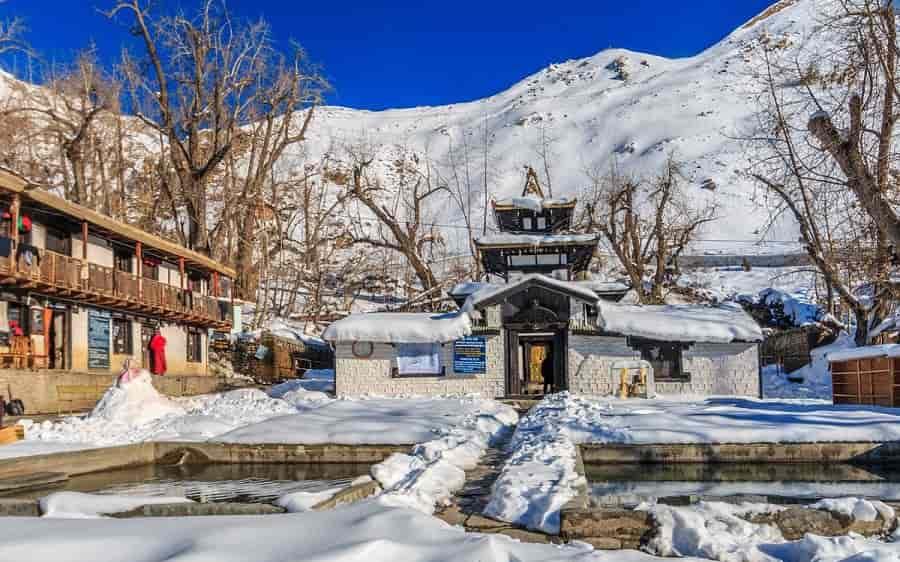Pathibhara
- Author : Prekshya
- Date : 27th September, 2024
- Time : 1 Min Read
- Euphoria
- Blog Detail
Pathibhara trek to visit Pathibhara Bhagawati temple in Taplejung
Pathibhara trekking is the popular pilgrimage trek; 3794 m Pathibhara temple offers a unique trekking experience to the tourists. Those who undertake this trek get spiritual fulfillment opportunity to see different species of wildlife, flowers, birds, and butterflies, its natural beauty and cultural experience.
The popular Hindu temple of Goddess Pathibhara Devi is situated on the hill of Taplejung in Nepal. Pathibhara Bhagawati temple and the third highest peak in the world are the major tourist attraction in Taplejung district. Both Hindus and Buddhists visit this temple and worship the statue of goddess.
From Taplejung bazaar, it takes one day to reach the temple by foot. On way to the temple one can find different species of Rhododendron. This is a rather short trek and can be completed in just five days.
Pathibhara Devi is considered as one of the Shakti Peeth (power center) local people believe that goddess Pathibhara Devi fulfills the wishes of those who worship her. It is believed that those who worship at this temple will be blessed with son and wealth.
March to June and September to November are the best seasons for the Pathibhara trek. The trek to Pathibhara temple (3795 m) is combined with the natural and cultural exploration making a unique exhilarating experience. On the way to the Pathibhara trek, the tourists can enjoy the views of waterfalls, the Timbuk Pond and many ancient monasteries.
The trekkers get the view of most of the Kanchenjunga range. The scenic beauty of the landscape, the majestic Mt. Kanchenjunga, the Himalayan peak above 7000 m and the diverse flora and fauna make this place immensely attractive. The Pathibhara Devi temple made it a sacred place also and attracts the tourists who crave for spiritual fulfillment as well as divine blessings.
Pathibhara trekking trail protected by Kanchenjunga conservation area it is not required previous hiking and trekking experience. Journey to Pathibhara temple starts from Suketar (2420m) which takes about 2-hours walk to reach from Phungling bazaar. Pathibhara Devi temple is considered as one of the “Sakthi Peeths”.
During special occasions worshipers from different parts of Nepal as well as India visit this temple and seek the blessings of the goddess. The pilgrims to this temple offer animals, gold and silver as offerings to Pathibhara Devi. Taplejung is known for its ethnic diversity also.
Though the Limbus is predominant here, there are other people also like Sherpa’s, Rais, Tibetans, Magars, Tamangs, Sunwars, Newars, Chhetris and Brahmins. Pathibhara is a popular religious trek located in naturally beautiful Taplejung district eastern Nepal.
Pathibhara trek itinerary
Day 01: Welcome to Nepal, upon your arrival in Nepal our representative welcome and assists to transfer hotel.
Day 02: Kathmandu city tours and preparation for Pathibhara trek.
Day 03: Drive to Basantapur (2200m) via Dharan.
Day 04: Trek from Basantapur to Chauki (2700m).
Day 05: Trek from Chauki to Ghupha Pokhari (2930m).
Day 06: Trek from Ghupha Pokhari to Nesum.
Day 07: Trek from Nesum to Dovan.
Day 08: Trek from Dovan to Suketar (2,420m).
Day 09: Trek from Suketar to Phathibhara Phedi (3,190m).
Day 10: Trek from Phedi to Phathibhara (3,795) and back to Phedi.
Day 11: Trek from Phathibhara Phedi to Suketar (2,420m).
Day 12: Flight from Suketar to Kathmandu, evening farewell dinner.
Day 13: After this amazing Pathibhara trek if you are interested for other outdoor activities like Safari, Rafting, Biking, Tours, Peak climbing or more trekking in other region we organize trip according to your desire. If you decide to leave Nepal we will transfer to airport for your onward destination.
Leave A Comment:
Author
Related Blogs
1 min read
by Ghanendra Thapa
Shiva Dhara
Shiva Dhara Trek, one of the most interesting, but most difficult to do, among the trekking routes in the Makalu Arun Valley. Now one of the leading p...
0 min read
by Admin
The Essence of Euphoria: Chasing Joy
Euphoria is more than just a fleeting emotion; it's a profound state of joy that can transform our lives. In this post, we explore the essence...
1 min read
by Anuja Pneru
Mukinath
The temple of Muktinath is in the trans-Himalayan locale of Nepal at the foot of the snow-covered ranges at an altitude of 3,800 m. The site is sacred...



